Hip Hop and fashion have stood side by side since the beginning of the music genre. Since its inception, the brew of creativity and individualized self-expression has long defined the culture. Having emerged from New York in the early 1970s, Hip Hop was born out of a confluence of Black American, Latinx, and Jamaican cultures. For many, at the time of its founding, it was either an escape or a way to voice the many socio-economic and political realities of the Black man. Naturally, fashion quickly became an important part of Hip Hop’s legacy.
From its genesis, up until contemporary times, Hip Hop has shaped trends in the musical and fashion worlds. Pointing out some of the trailblazers and iconic figures that dared to dissent from the status quo; let’s take a journey through the evolution of Hip Hop and fashion.
1970s
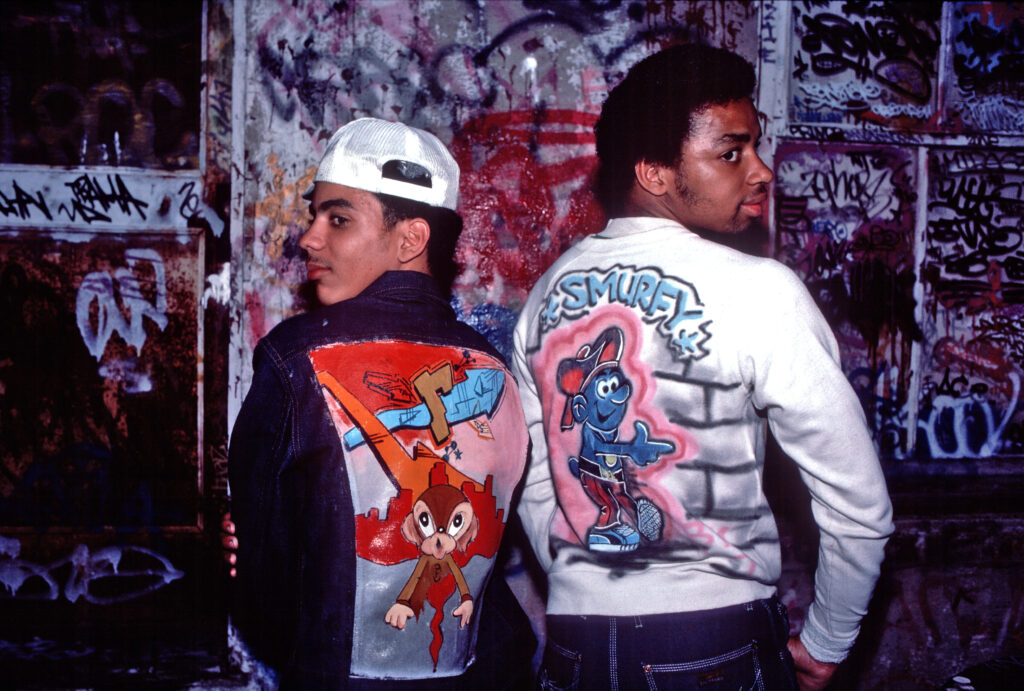
The marriage between Hip Hop and fashion existed long before the genre was created and pushed into the mainstream. The style of the Bronx greatly developed the Hip Hop scene during the 70’s. MCs and DJs were the exemplars of the time and the ones whose fashion choices were emulated. The founding DJs, DJ Kool Herc, Grandmaster Flash, and their succeeding counterparts were the fashion icons during these times. As a result, baggy clothes, bomber jackets, and individualized hairstyles like Afros and cornrows reigned supreme. Sportswear brands like Adidas, Pro-Keds, Puma, Converse, and Kangol also took the top spot for fashion picks.
Read More: Tracing The Evolution Of Puma: From Athletics To Fashion
1980s
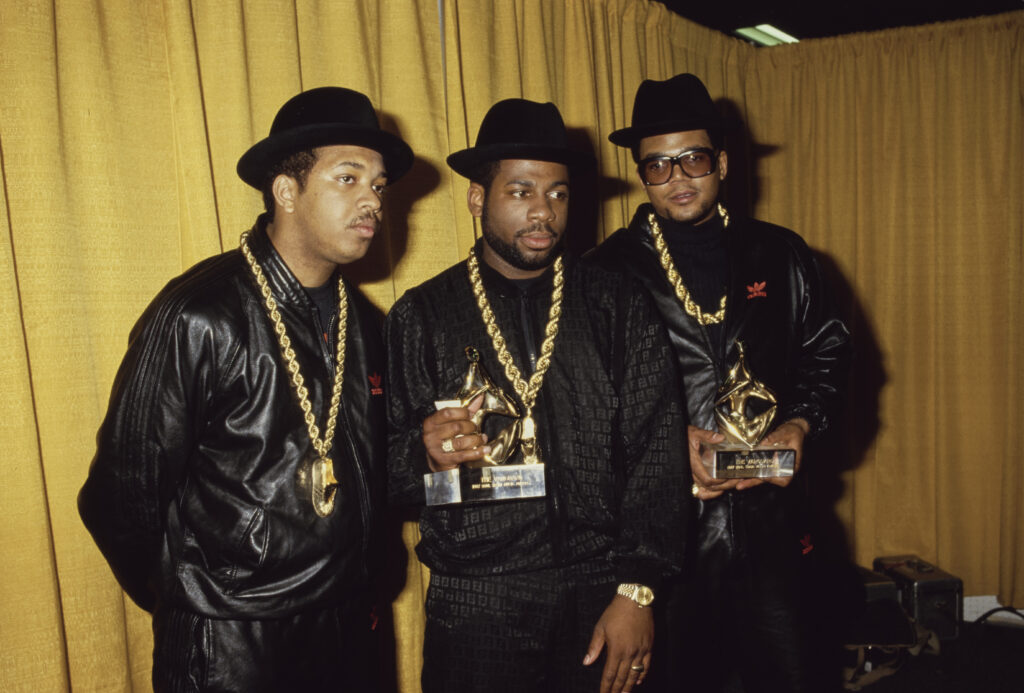
From the early to mid-80s, Run-D.M.C and LL Cool J stood as the pacesetters musically and stylistically. Their brands reinforced the staple Hip Hop look of sportswear, bucket hats, and large chain accessories. During their run, the female Hip Hop trio, Salt-N-Pepa also broadened the range by wearing bold and colorful outfits paired with asymmetrical hairstyles and statement accessories. The style of the 80’s moved ahead when Harlem’s Dapper Dan, known as the “fashion outlaw,” merged high fashion luxury and Hip Hop streetwear. The Shirt Kings were also a prominent brand in the Hip Hop scene at the time. Some of the biggest rap artists of the ‘80s wore their designs, and they are regarded as one of the originators of streetwear style.
Read More: Dapper Dan Talks Mike Tyson Fight In His Store, Getting Raided In The ’90s Because Of Fendi & More
1990s
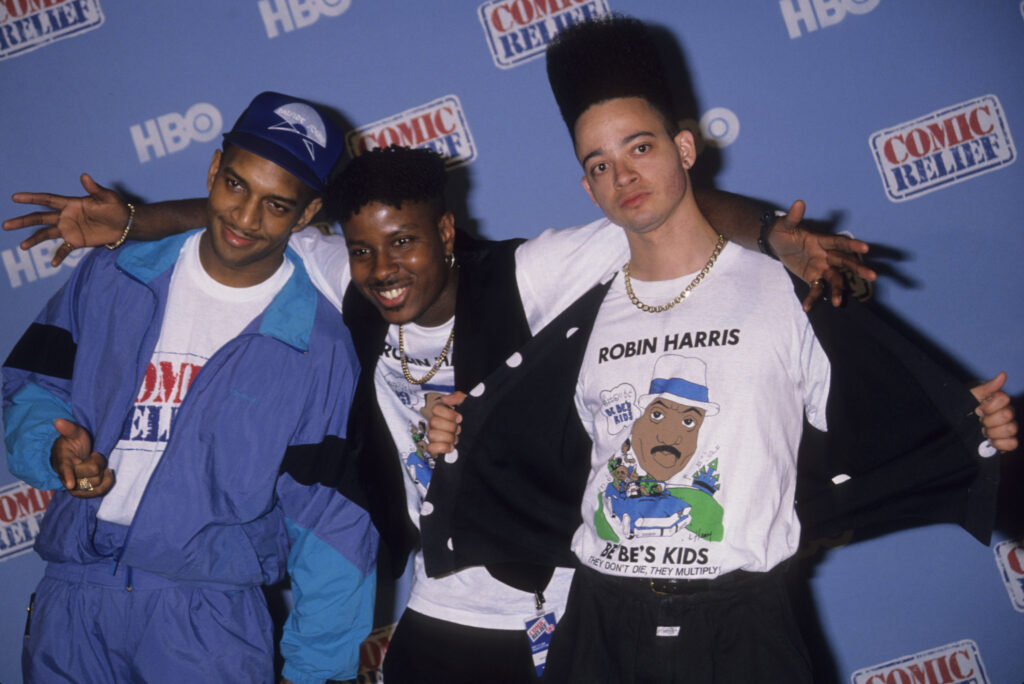
As the 1990s rolled in, a new wave of fashion trends began to emerge. Names like Tupac, Notorious B.I.G., NWA, and more took the stage. The hi-top fade haircut, oversized jerseys and baseball caps were the most notable features of the Kid ‘N’ Play duo. The Fresh Prince, Will Smith, further stamped these looks. Tupac Shakur’s renegade style was also a new addition to the fashion scene.
Representing the West Coast, he sported bandanas, Timberlands and many other statement fashion items. The East Coast star, Notorious B.I.G., had undergone different eras of fashion styling. Reinforcing the traditional baggy aesthetic at the start of his career, the rapper switched up the game with a Mafioso look, wearing tailored suits and gold canes. Fashion brands like Tommy Hilfiger and Ralph Lauren became associated with Hip Hop during the 90s. Stars like Snoop Dogg famously donned their designs.
Furthermore, Some other influential designers of this era include streetwear pioneer Karl Kani and April Walker, CEO of Walker Wears. Daymond John, CEO of FUBU, one of the most iconic clothing brands in Hip Hop history is also responsible for many emulated fashion looks.
Read More: Nas & Karl Kani Team Up For Throwback “Escobar Season” Collection
The Women Of The 90s
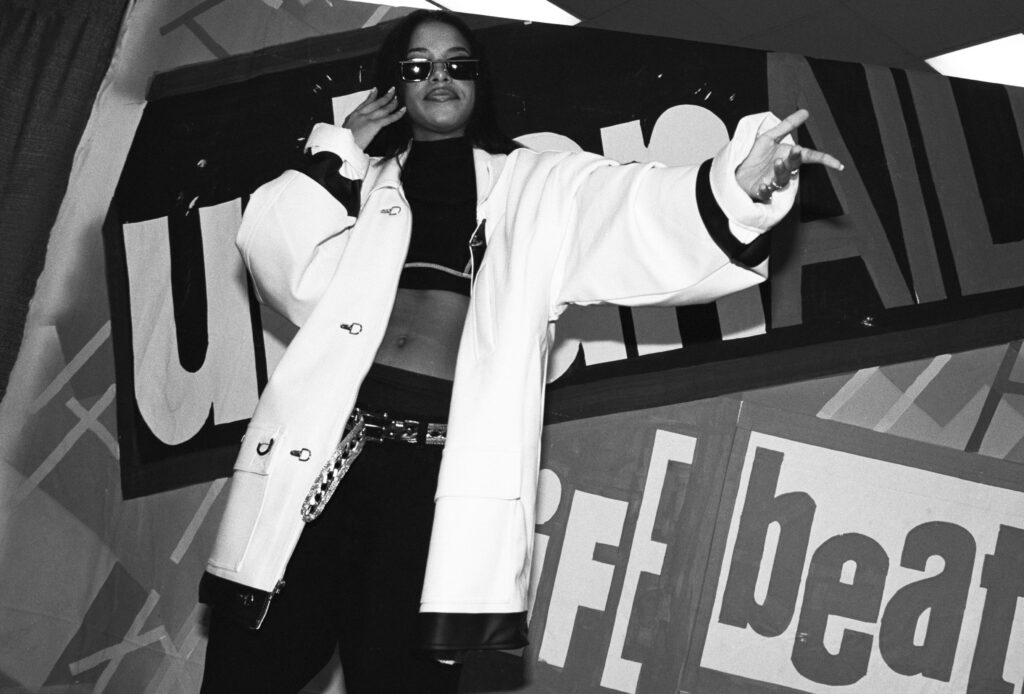
Aaliyah quickly rose to prominence, not just for her music, but with her fashion-forward style. Emerging as a stylist’s darling, she found favor with several notable fashion brands, particularly Tommy Hilfiger. Aaliyah stood out among a crop of female R&B stars, proudly donning tomboyish clothing. With baggy pants, crop tops, and sportswear, she served to influence several artists after her
Missy Elliot was another trendsetter not just in her futuristic Hip Hop sound, but in her fashion choices. Her fusion of baggy fashion and an avant-garde, innovative style cemented her as an eclectic style-bender. One of the blueprints for the female hip-hop style today was female rapper, Lil’ Kim. The style icon was popularly known for her colorful lyrics and wigs, provocative costumes and glamorous accessories. Renowned stylist and fashion designer Misa Hylton played a key role in shaping the visual aesthetics of the iconic rapper.
Furthermore, Lil Kim embodied the sexy, high-fashion style that has become synonymous with today’s women in rap. With her groundbreaking sophomore album, Notorious K.I.M., she solidified herself as a fashion icon. Donning major names like Versace, she showed off an allure that made top brands hungry to showcase their outfits on female rappers.
Read More: Lil Kim Then & Now: Her Transformation Into An Icon
The New Millennium (The 2000s)
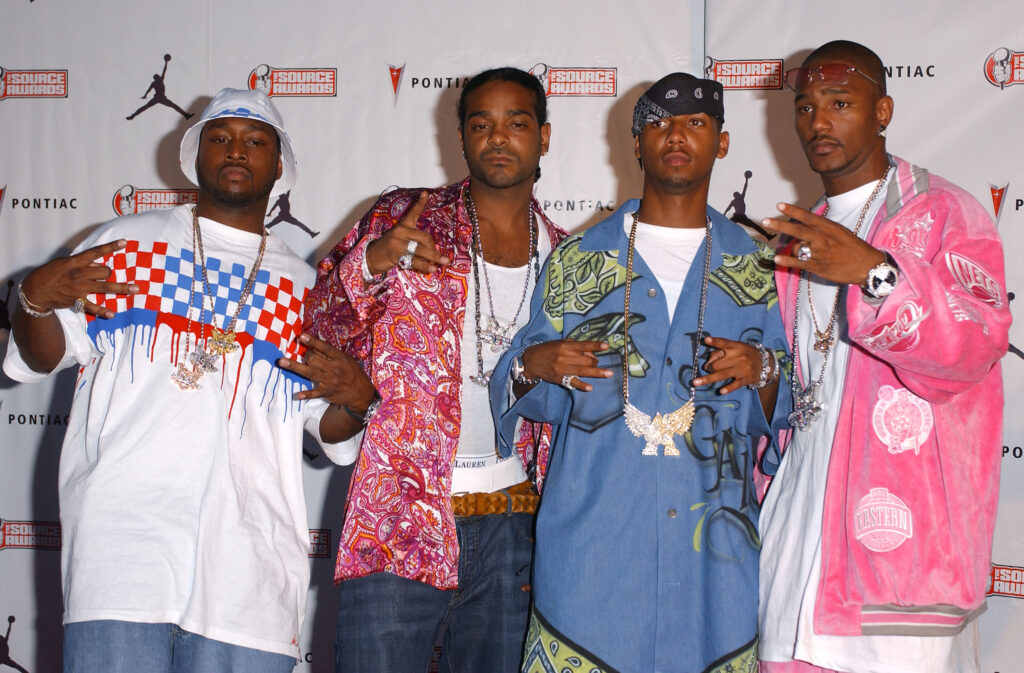
Above all, Hip Hop and fashion had blended to create so many statement styles synonymous to the culture. Nonetheless, the new millennium brought a new epoch of modern hip-hop fashion. Artists like Jay-Z and P. Diddy shifted the course of Hip Hop fashion by taking on a more opulent style. They traded in their initial baggy look for fur coats, bigger diamond jewelry and tailored suits; representing much of what they rapped about. The iconic group, The Diplomats, also known as Dipset, contributed to the Hip Hop style of their time. Oversized jerseys, bandanas, and designer brands like Gucci and Versace characterized their style. Their fashion sense became correspondent with the Harlem scene from the late 90s to the early 2000s.
In addition to these styles, skatewear fashion was popularized in the Hip Hop scene by artists like Pharrell Williams, N.E.R.D, and the Neptunes. Also, names like Kanye West and the late, great Virgil Abloh have further pushed the boundaries of what Hip Hop style can embody.
Now more than ever, Hip Hop has become synonymous with high fashion. With his Yeezy brand, Kanye West has managed to redefine streetwear, combining minimalism and high fashion. Williams, on the other hand, has continued to blur the lines and experiment with the genre and its fashion. Pharrell’s love for exploring has generated a sophisticated and edgy feel which now symbolizes the core of his brand. The next surge of artists brought on newer approaches to fashion reflecting the style of the times. The revival of skatewear, skinny jeans and urban street style became more common in the late 2000s, lasting until the present day. Today’s artists like Reese LaFlare have synchronized streetwear and music.
More recently, Hip Hop style is now a conflation of high fashion, streetwear and personalized style. The boundaries are continually being pushed even further. The average Joe would explain this style reminiscent of 80s-90s fashion. Now it has completely shifted to a meld of old and the new— with more of the new.
Read More: 20 Most Fashionable Rappers Through The Decades
[via]
This post was originally published on this site be sure to check out more of their content.








